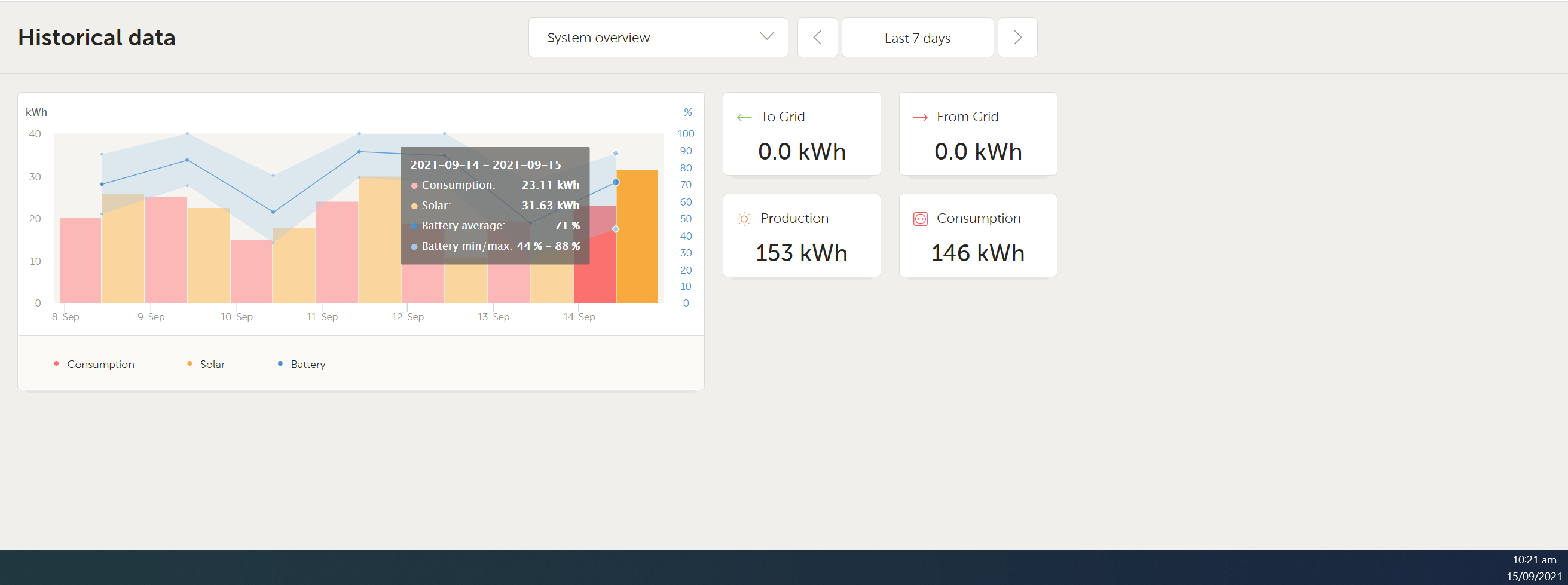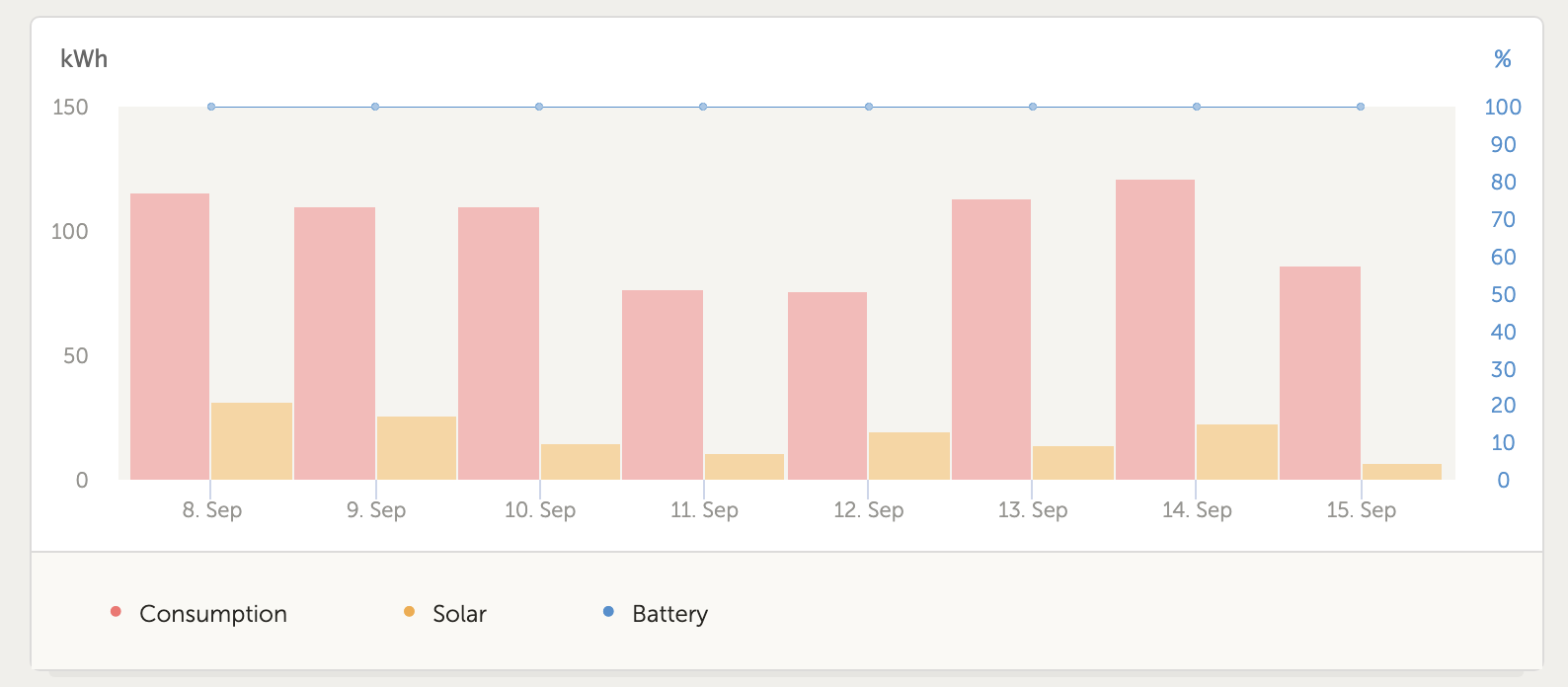Hi there,
I have noticed recently that the figures I am shown for consumption and production differ depending how I am grouping the data. For example if I look at my production for yesterday (14th September) using the "yesterday" filter I see 27Kwh production but if I use the "last 7 days" filter I will see 31Kwh for the same day and that is currently increasing with todays production. I think this might be a timezone issue, I think UTC time is being used for aggregated data (ie last month) but a local timezone conversion is being done on the more granular data (ie intraday).
The above doesnt fully explain the data inconsistencies I am seeing though, I also noticed that recently when using the "yesterday" filter I get a warning, it seems to be including the last few minutes of the previous day in the returned results which invalidates the aggregate figures. This has only recently started happening so I think an update has introduced a bug with the tz conversion itself. This might also explain the strange inconsistencies.
In New Zealand we have daylight savings time which may have something to do with it, I'm not sure which DB is being used by Victron but in MYSQL this can be handled by storing the data in UTC time and always using the convert_tz function on displayed/selected data ie SELECT convert_tz('datetime_field', 'utc', 'pacific/auckland')
Is anyone else experiencing this?
thanks,
Zac



